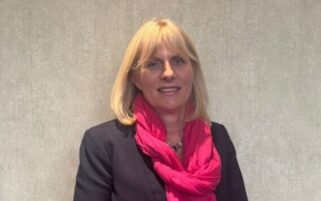CATHRYN BATEMAN
Consultant Editor
Management in Practice
Practice Manager
Worcester Street Surgery
Stourbridge, West Midlands
Cathryn has been the practice manager of Worcester Street Surgery since 2002. Prior to this, she was Business Manager at a Birmingham university health centre after working as a practice secretary/receptionist. Cathryn is a coauthor of the Royal Society of Medicine’s Handbook of Practice Management, and is the Consultant Editor of Management in Practice
Digital dictation is not a new concept, I know, and as a progressive practice it was an initiative that we were keen to move forward with. But installing new dictation equipment always seemed to get “parked” as something else continually seemed to get in the way – a new document management system, for example.
We finally had to bite the bullet when one of our longstanding and most experienced secretaries went off on long-term sick leave. We suddenly found ourselves re-evaluating our systems and working patterns, and concluded that our secretarial department needed to be more responsive, particularly if we were to embrace Choose and Book and meet the required turnaround times of that system.
We were aware that we needed to replace the secretary we had lost to illness, but also that any replacement would need time to offer the same level of productivity our experienced secretary had offered. An opportune moment presented. Our new secretary was at that point going through her medical secretarial qualification. She was consequently familiar with digital systems, and encouraged the practice to part with a fair amount of cash and embrace a new way of working.
I can honestly say we genuinely haven’t looked back. We took our time choosing the right system for us, as there is a lot of choice on the market, and they are all seemingly very good, but we eventually selected the system we considered to be the simplest for all.
Doctors like their systems to be accessible and responsive. While they welcomed the chance to do away with the elusive analogue tapes, they still had to be convinced that the system would be simple to operate and require little in terms of training.
I am happy to report that it has been all of these things. The set-up – on no less than 20 doctors’ machines, four secretaries and my own – was done very efficiently, and training was short and sweet. The secretaries and doctors took to the new system immediately and the benefits speak for themselves.
We are able to turn work around much more quickly, as the sound is clearer and the secretaries don’t have to spend ages rewinding tapes or asking doctors to confirm paragraphs. We no longer waste time looking for lost tapes or lost machines, as each dictaphone is allied to a specific PC.
The secretaries can also choose which piece of transcription work they will pick up – so if it’s the end of the day, they can choose a short letter rather than a manuscript. Urgent letters can be seen at a glance, ensuring that they take priority rather than having to wade through a tape to find them.
There has also been no need to communicate with the supplier since purchase. How many new systems could we say that about? Integration was very smooth and we have not encountered any teething problems. Another bonus is that the system allows for additional manpower to be brought in at busy times, as, providing the software is installed, the system can be accessed from any PC.
We have not yet gone down the route of voice recognition. Although I can see obvious advantages, I am not sure that it’s something we are in a rush to do, as for the moment we are pleased to have clear and accurate systems with which we can comply with the Choose and Book turnaround time.



